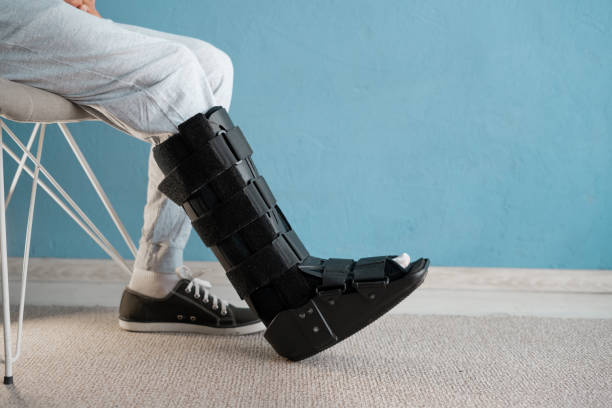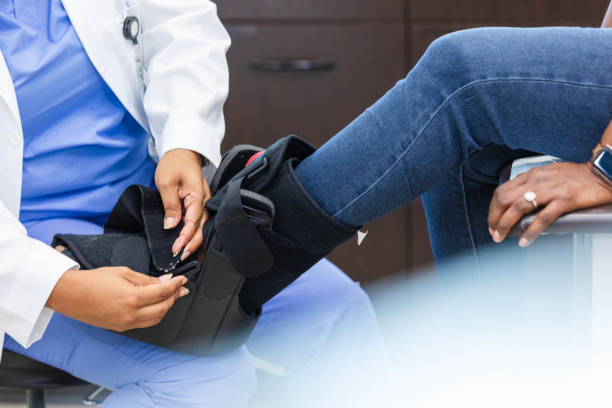Introduction

When caring for our bodies, supporting and protecting areas prone to injury is crucial. An example of such an area is our ankles, vital for stability and bearing our body weight. Many opt for ankle braces to help this vulnerable joint handle the demands of physical activity. If you are considering using an ankle brace for the time being or seeking advice, this article provides valuable insights. By following these guidelines, you can ensure a smooth experience with ankle braces and receive the necessary support and protection.
Understanding Your Requirements
Before purchasing a foot ankle brace support, it is essential to evaluate your needs. Different sports or activities may necessitate varying levels of ankle support; therefore, comprehending your requirements becomes imperative in finding the correct fit.
Consider Your Activity Level
Your chosen activity impacts the demands placed on your ankles. Whether you participate in high-impact sports like basketball or engage in low-impact activities such as walking or yoga, each activity affects your ankles. For instance, if you partake in sports involving jumping or rapid changes in direction, you may require a more rigid and supportive brace. Conversely, if your exercise routine mainly consists of activities requiring flexibility, you might find a less restrictive and lighter brace sufficient.
Deciding on the Type of Brace
Once you’ve assessed your needs based on your activity level, the next step is to consider which type of brace would be most suitable for you. There are three types: lace-up braces, strap braces, and sleeve braces. Lace-up braces offer support, allowing individuals to adjust the tightness according to their comfort level. Strap braces are known for their versatility and targeted compression since they come with straps that can be tightened around different areas of the ankle as needed. Sleeve braces provide a snug fit by slipping over the foot like a sock – ideal if you prefer a hassle-free option or struggle with multiple adjustment points.
Ensuring the Right Fit
Once you’ve determined the type of brace, achieving the right fit is vital for comfort and effectiveness. A fitting brace can lead to better support, less discomfort, or restricted movement.
Here are some tips to follow when striving for the ideal fit:
Accurate Measurements
To determine your size accurately, use a tape measure to measure the circumference of your ankle. Each manufacturer may provide sizing recommendations, so consult their guidelines for accurate measurements.
Follow the Sizing Chart
Refer to the manufacturer’s sizing chart. Match your measurements with their suggested sizes. Avoid assuming your shoe size alone is sufficient, as ankle sizes vary.
Measure Both Ankles
It’s essential to measure each ankle as they may differ in size or shape due to factors like injuries or genetics. Choose a brace that accommodates your ankle for fit and comfort.
Test Comfort
Once you have your desired size, try on the brace. Perform movements to your activity level. Ensure it allows a range of motion while providing stability and support for your ankle joints.
Usage Guidelines
Now that you have selected the ankle brace and ensured a proper fit, it’s time to implement it! Here are some additional considerations for using it:
Gradual Break-In Period
When using an ankle brace for support, allow time for adjustment by gradually wearing it during training or physical activity sessions instead of immediately engaging in intense exercise, as this will help your body adjust to wearing the brace and avoid discomfort from stress on previously unsupported areas.
Keep Your Skin Dry
Avoid moisture buildup as it leads to skin problems like irritation or rashes. Keep the area dry using moisture-wicking materials in socks, or consider ankle braces designed for breathability during activities.
Regularly Check for Wear and Tear
Inspecting your brace for any signs of wear and tear as continuous use can cause damage. Over time, the elasticity or support level may decrease, which could compromise its effectiveness in preventing injuries. If you notice wear, it’s advisable to replace the brace to maintain support and protection.
Conclusion
Ankle braces are valuable in providing support and protection during activities. By understanding your needs, choosing the type and fit, and following proper usage techniques, you’ll have a successful experience with ankle braces. Consult a healthcare professional for concerns before incorporating an ankle brace into your routine. Stay active, stay safe, and enjoy an ankle brace’s stability!
Published by HOLR Magazine.


